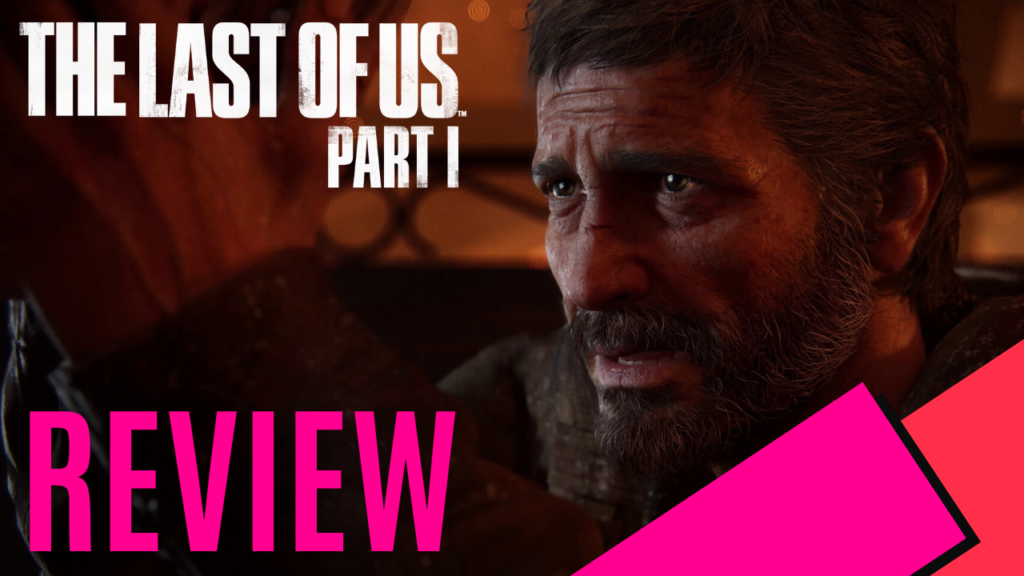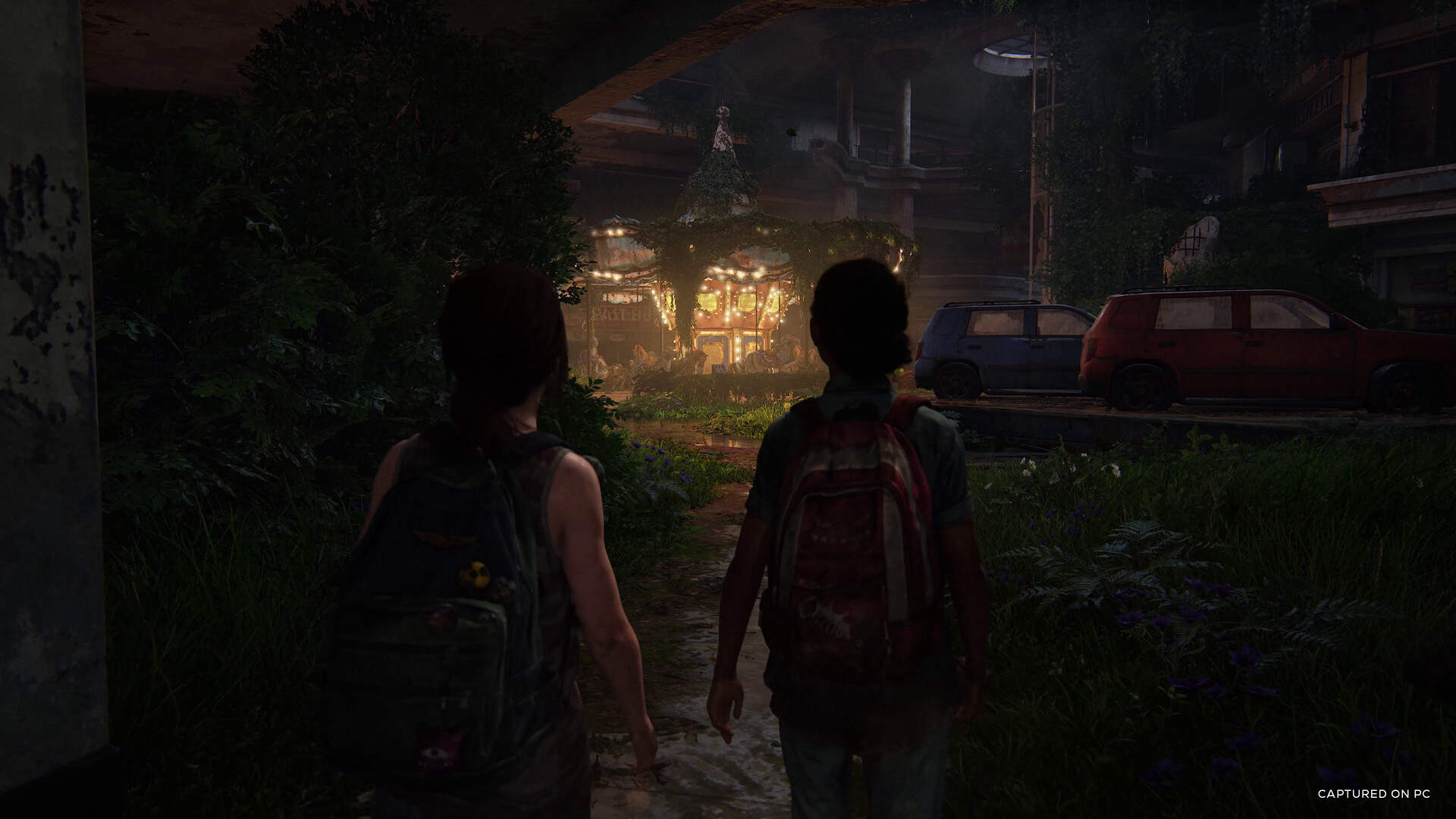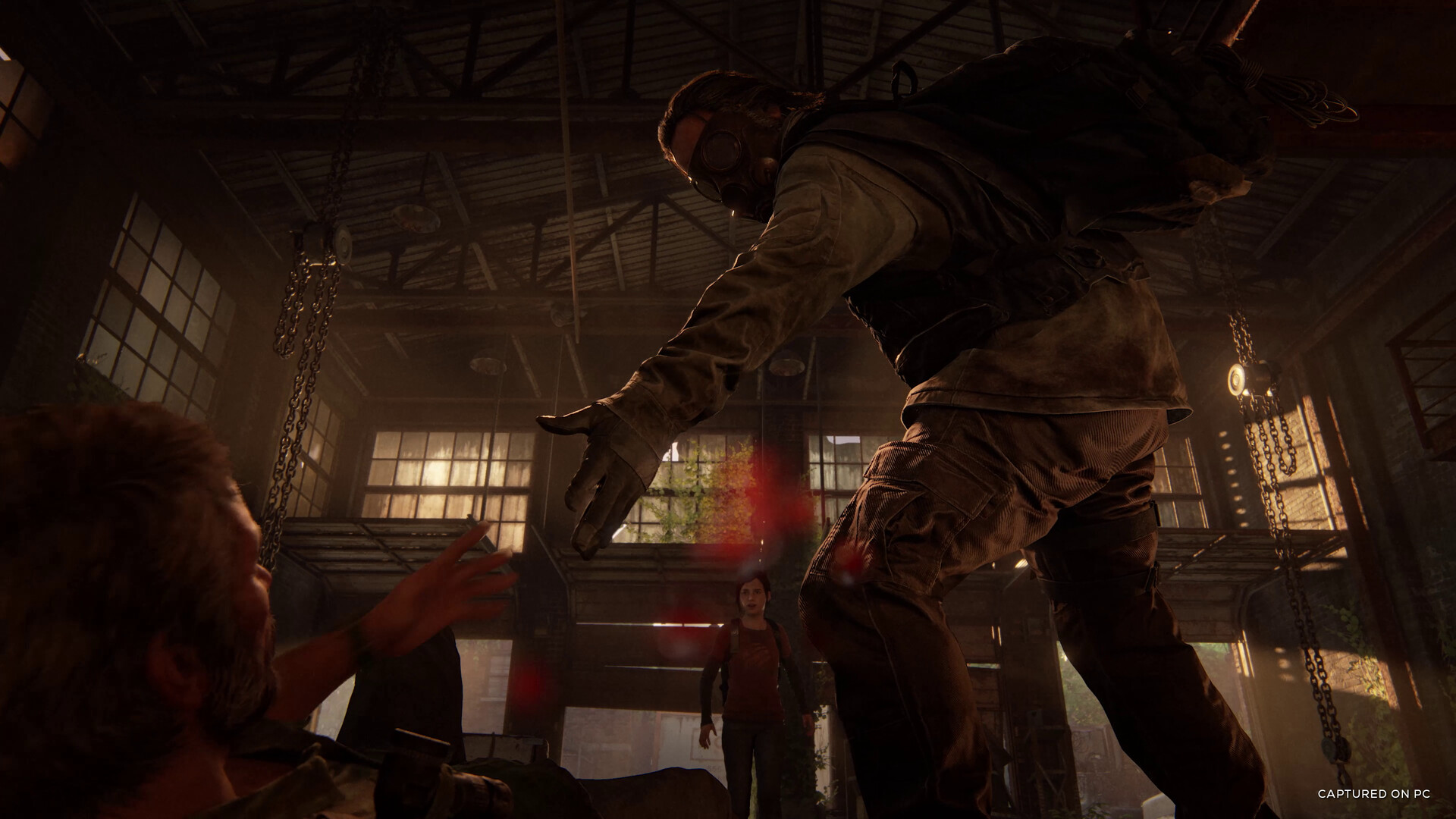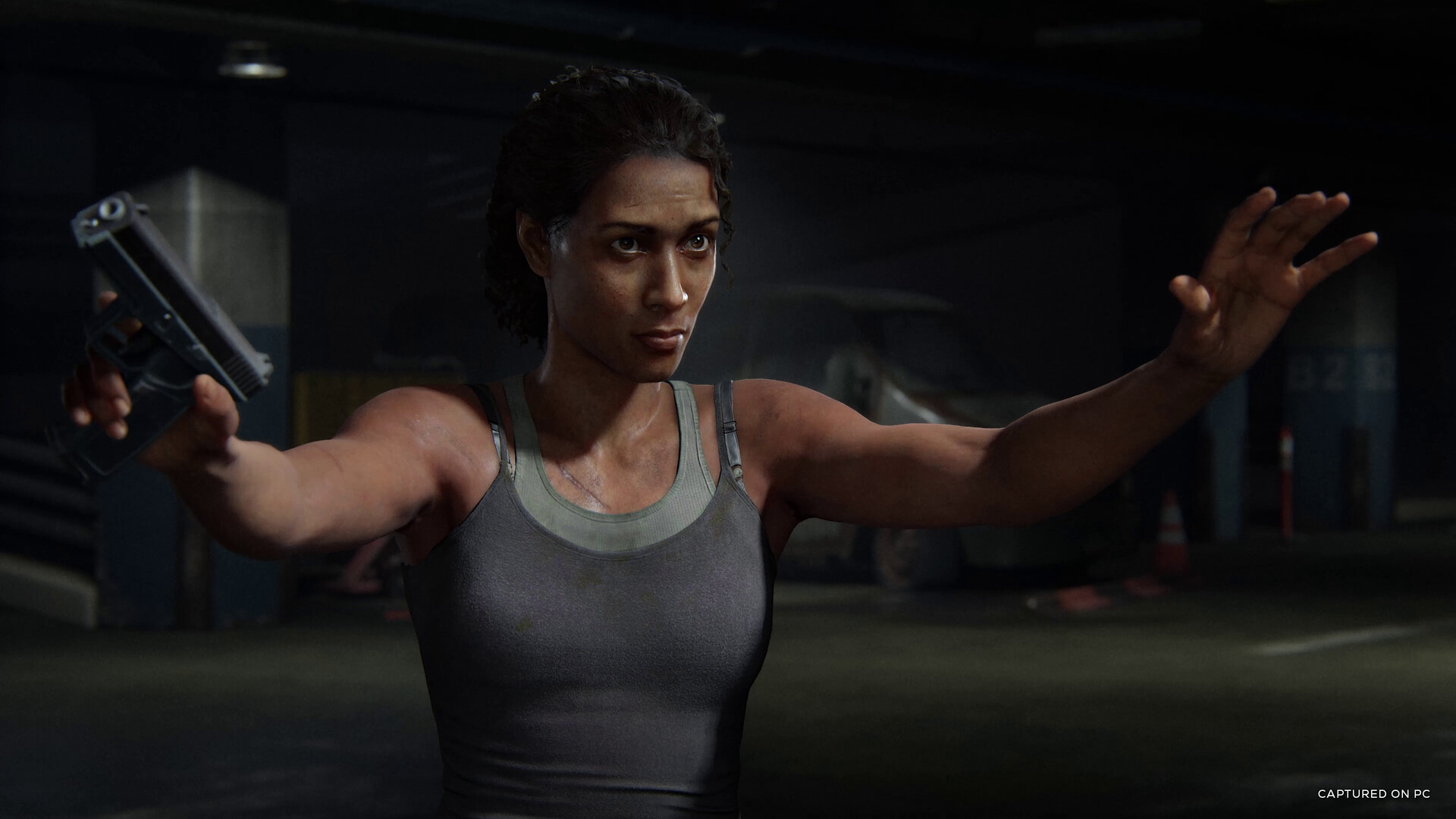
The Last of Us Part 1 has finally made it to PC after a long road. It’s been around 9 years since we witnessed the start of the outbreak and it’s time to do it all again with a next-gen reworking of Naughty Dog’s iconic title. Originally released as a PlayStation 3 exclusive in 2013 and with a PS4 remaster, it wasn’t until Playstation 5 that The Last of Us was completely rebuilt from the ground up. This time around, it’s off to a tumultuous start, with a surge of performance issues but massive potential on current PC hardware that players are dying to see.
As a quick recap on what to expect from The Last of Us Part 1, it’s a third-person perspective action-adventure game with survival horror elements. It will make you ugly cry as you’re chased by infected, or cry like a baby during key moments. Playing as Joel, a ruggedly handsome daddy-type, we witness the beginning of a really bad fungal infection going around mutating people into zombie-like creatures called Infected.
A young girl, Ellie becomes an unlikely travel partner as they team up to travel cross-country across the United States in an attempt to get rid of the infected once and for all. In an attempt to avoid spoilers: it’s emotional, intense, and definitely unforgettable for the hordes of loyal fans.
This game is critically acclaimed, and with good reason, being one of the highest-rated titles of all time, winning Game of the Year in 2013, and with the hugely talented team taking home hundreds of awards between them. To top it off, with the release of HBO’s The Last of Us series, the spotlight is back on with high expectations for the PC version. Don’t let what I’m about to talk about deter you from trying the game at some point, but proceed with caution, some of the performance struggles might make waiting a while more palatable.

Late last year the revamped PS5 version was released to keep up with current-gen capabilities and to match improvements introduced in The Last of Us Part II. Graphical enhancements, smarter AI enemies, reworked animations, and performance upgrades are just a few changes to an already strong foundation. The PC version, however, has fallen ill to the same fate as many recent PC ports on launch – poor performance.
On the first day, players reported long shader compilation and loading times, frequent crashes, inconsistent frames, and sub-par optimisation. For some, the game was completely unplayable. A disappointing start after a long wait for PC players. Since its release, Naughty Dog has been working on fixes for the major culprits, though plenty of gamers might have to endure the initial growing pains of the release. As of today, there have been two hot fixes addressing these problems. They’re wasting no time trying to deliver the game as it was meant to be played with more patches incoming.
My first encounter involved an hour-long wait for shader compilation to complete which has been a common complaint. This I had no real qualms with, apart from feeling some impatience wanting to get right into the action. One big round of shader compilation before playing isn’t necessarily a bad thing, with it reducing the odds of stuttering down the line. Stuttering felt less impacted by in-game compilation than other PC ports, but it was definitely still somewhat noticeable from the opening cutscene.
With an NVIDIA 2080ti GPU, an AMD 3600x CPU, and 16 GB RAM, for those who are fluent in PC parts, I’m at about the middle-ground for specs to run the game. On my system, I initially attempted to play on the highest settings, and most issues I encountered were stuttering and frame drops. Settings can be tweaked with pretty extensive options for graphics and performance, so I was able to mess around until I found the sweet spot for my game to run nicely.

The display and graphics menus have a VRAM usage bar at the top showing how intensive the settings will be on the PC, and each option has details on the effect on GPU, VRAM, and CPU performance, depending on what is set. I would love to see features like this in more games. I’m not exactly a computer whiz, so it’s a very welcome quality-of-life improvement. A benchmarking scene, rather than going in and out of gameplay, where I can see the changes in action would be even better.
My system was able to just scrape by on Ultra settings, but from the opening scenes, it was chugging. It wasn’t unplayable, but the frames dropped fairly significantly. With some adjustments to graphic and display settings, I settled mostly on high at 1080p with DLSS enabled, and I was still getting around 60 FPS, jumping between 55 and 75 FPS. Stuttering was noticeable loading in and out of cutscenes, but it was mostly stable, and luckily, I only had one crash during my whole playthrough, unlike many experiencing frequent crashes.
The attention to visual detail with incredibly detailed textures, expressive character models, and lighting, has raised the bar so high that many PCs are struggling to keep up. For the ultimate gameplay experience, a high-end, or at least mid-tier system is the way to go. Anything less won’t do the game justice. Ultimately, better optimisation down the line is the endgame for a lot of players. Performance issues are being dealt with and I found my time with Joel and Ellie to be just as addictive and memorable as the first go around, despite a few bumps along the way.
I cannot stress enough that despite some performance drops, I thoroughly enjoyed the 20 or so hours it took me to finish the game. Trekking through ruined cities filled with lush overgrowth, into ominous underground passageways, and throughout seasons feels like really being involved in the journey. All while witnessing scenes featuring the voice talents of Troy Baker (Joel) and Ashley Johnson (Ellie) among others. To top it all off, a subdued, impactful score balances out the tense, calm, and emotional moments. Audio design is a big thing when it comes to stealth, especially when avoiding sound-sensitive Clickers, mashing “listen mode” was one of my main moves.

The PS5 sequel, The Last of Us Part II had heaps of quality of life changes, especially in difficulty and accessibility. I’m not the hugest fan of horror, but personally, I don’t find this to be horror as much as an adventure game thanks to the adjustable difficulty settings. Playing on normal with the ability to alter gameplay elements to my liking was great for those times I got really stuck, then once I got past a hurdle I could just crank it back. For players that want a challenge, there are scalable difficulties, permadeath, and even speedrun modes.
Carrying accessibility improvements to the PC port so that more players can enjoy unimpeded is always a good thing. I adjusted some visual and hearing cues for myself; motion blur and tinnitus sounds went off immediately for me. Naughty Dog deserves huge credit for the extra considerations in accessibility. On top of that, having the option to play using a PS5 controller with the traditional controller scheme, and the use of the adaptive functions, was nice when I was feeling too lazy to sit at my desk using a keyboard and mouse.
New players with a love for action-adventure games and existing fans looking to revisit where it all started can find it in The Last of Us Part 1 (PC). With a story-rich journey about the sacrifices we make for our relationships, there are plenty of iconic moments that will stick with you for years to come. It’s an incredible game, but performance-wise, it needs a bit more time to be patched up.
It’s been a long wait for PC players, but you may want to wait a bit longer for this one depending on how fixes progress over the next few weeks, and if it wasn’t for the release bugs, I would give this game a 10/10. Trust me, despite the current issues, The Last of Us Part 1 (PC) is worth it, and hopefully, the upcoming fixes will make this the case for more people.

The Good
- Enhancements to graphics and quality-of-life improvements
- Breathtaking visuals and audio
- Varied gameplay
- Memorable story and characters
The Bad
- Poor performance - especially on older systems
- Sub-par optimisation: Crashes, inconsistent frames, long loading times
- Still needs multiple fixes to address all the issues








